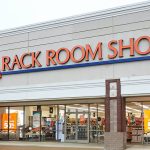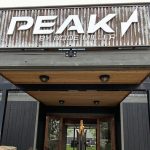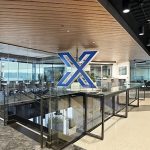Burlington Stores, Inc. reported same-store sales decreased 18 percent for the first quarter ended April 30, missing expectations.
Michael O’Sullivan, CEO, stated, “We are disappointed with our first-quarter results. We were up against 20 percent comp growth from 2021 so we had planned for a mid-teens comp decline, but we missed this plan. The biggest driver of this sales miss was that inventories were too low and unbalanced in February and March. We raised inventory levels during the quarter, in line with last year, and this drove an improvement in our comp trend. Our three-year geometric comp stack* was -6 percent in February, -2 percent in March, and +5 percent in April.”
He continued, “Despite the monthly sequential improvement during Q1, our sales trend remains weak, with comp trends in May similar to April. We had anticipated that 2022 would be a difficult year in retail but the economic environment, especially the impact of inflation on lower-income shoppers, is having a greater impact than we had expected. We have lowered our outlook for sales.”
He concluded, “Historically, economic slowdowns have strengthened off-price retail at the expense of other channels. We are already seeing a significantly increased supply of off-price merchandise, and we feel that our conservative sales plan and strong liquidity position us well to take advantage of this opportunity. We also believe that if inflation persists and this economic slowdown spreads, then it may cause shoppers to trade down to off-price, looking for value. Lastly, we think that we may see longer-term strategic benefits if this situation accelerates the restructuring of bricks and mortar retail stores over the next few years.”
Fiscal 2022 First Quarter Operating Results
(for the 13-week period ended April 30, 2022 compared with the 13-week period ended May 1, 2021)
- Total sales decreased 12 percent compared to the first quarter of Fiscal 2021 to $1,926 million, while comparable-store sales decreased 18 percent compared to the first quarter of Fiscal 2021.
- Gross margin rate as a percentage of net sales was 41.0 percent vs. 43.3 percent for the first quarter of Fiscal 2021, a decrease of 230 basis points. Freight expense increased 150 basis points as a percentage of net sales and merchandise margins decreased by 80 basis points.
- Product sourcing costs, which are included in selling, general and administrative expenses (SG&A), were $157 million versus $141 million in the first quarter of Fiscal 2021. Product sourcing costs include the costs of processing goods through our supply chain and buying costs.
- SG&A was 35.3 percent as a percentage of net sales versus 30.3 percent in the first quarter of Fiscal 2021. Adjusted SG&A, was 26.7 percent as a percentage of net sales versus 23.7 percent in the first quarter of Fiscal 2021, an increase of 300 basis points.
- The effective tax rate was 8.7 percent versus 19.2 percent in the first quarter of Fiscal 2021. The Adjusted Effective Tax Rate was 19.2 percent versus 19.4 percent in the first quarter of Fiscal 2021.
- Net income was $16 million, or $0.24 per share vs. $171 million, or $2.51 per share for the first quarter of Fiscal 2021. Adjusted Net Income was $36 million, or $0.54 per share versus $176 million, or $2.59 per share for the first quarter of Fiscal 2021.
- Diluted weighted average shares outstanding amounted to 66.6 million during the quarter compared with 68.0 million during the first quarter of Fiscal 2021.
- Adjusted EBITDA was $125 million versus $293 million in the first quarter of Fiscal 2021, a decrease of 690 basis points as a percentage of sales. Adjusted EBIT was $59 million, a decrease of 780 basis points as a percentage of sales.
Inventory
Merchandise inventories were $1,257 million versus $768 million at the end of the first quarter of Fiscal 2021, a 64 percent increase, while comparable store inventories increased 2 percent. Reserve inventory was 50 percent of total inventory at the end of the first quarter of Fiscal 2022 compared to 35 percent at the end of the first quarter of Fiscal 2021.
Liquidity and Debt
The company ended the first quarter of Fiscal 2022 with $1,225 million in liquidity, comprised of $627 million in unrestricted cash and $598 million in availability on its ABL facility. The company ended the first quarter with $1,489 million in outstanding total debt, including $949 million on its Term Loan facility, $508 million in Convertible Notes, and no borrowings on the ABL facility.
Convertible Note and Common Stock Repurchases
During the first quarter of Fiscal 2022, the company entered into privately negotiated transactions to repurchase approximately $65 million in principal value of the company’s outstanding 2.25 percent Convertible Notes. The total transaction value of approximately $78 million was paid in cash. After the completion of these transactions, approximately $508 million of the Convertible Notes remained outstanding.
In addition, during the first quarter of Fiscal 2022, the company repurchased 512,905 shares of its common stock under its share repurchase program for $99 million. As of the end of the first quarter of Fiscal 2022, the company had $551 million remaining on its current share repurchase program authorizations.
Outlook For the full Fiscal Year 2022
(the 52-weeks ending January 28, 2023)
- Comparable store sales to decrease in the range of -9 percent to -6 percent for Fiscal 2022, on top of the 15 percent increase during Fiscal 2021, this translates to a 3-year geometric comparable-store sales stack of 5 percent to 8 percent versus Fiscal 2019;
- Capital expenditures, net of landlord allowances, are expected to be approximately $730 million;
- The company still expects to open 120 new stores, while relocating or closing 30, for a total of 90 net new stores in Fiscal 2022;
- Depreciation and amortization, exclusive of favorable lease costs, to be approximately $285 million;
- Adjusted EBIT margin to be down 130-to-200 basis points to last year;
- Interest expense is expected to be approximately $65 million;
- An effective tax rate of approximately 25 percent to 26 percent; and
- Adjusted EPS to be in the range of $6.00 to $7.00, as compared to $6.00 on a GAAP basis and $8.41 on a non-GAAP basis last year.
For the second quarter of Fiscal 2022
(the 13 weeks ending July 30, 2022)
- Comparable store sales to decrease -15 percent to -13 percent, this translates to a 3-year geometric comparable-store sales stack of 1 percent to 3 percent;
- Adjusted EBIT margin to be down 670-to-610 basis points to last year;
- An effective tax rate of approximately 26 percent to 27 percent; and
- Adjusted EPS in the range of $0.18 to $0.31, as compared to $1.50 on a GAAP basis and $1.94 on a non-GAAP basis last year.
*Three-year geometric stack is defined as a stacked comparable sales growth rate that accounts for the compounding of comparable store sales from the same period from Fiscal 2019 to Fiscal 2022. It is calculated for each Fiscal 2022 quarter and full-year Fiscal 2022, respectively, as follows: (1 + QTD 2021 comparable store sales growth)* (1 + QTD 2022 comparable store sales growth) – 1, and (1 + YTD 2021 comparable store sales growth)* (1 + YTD 2022 comparable store sales growth). Comparisons for Fiscal 2021 periods are made versus the same periods in Fiscal 2019.
















